Summer MUSIC Camps for Ages 13 and Under: Yes You Can!
Monday, January 22, 2024 | Practicing and General Education
About this post...
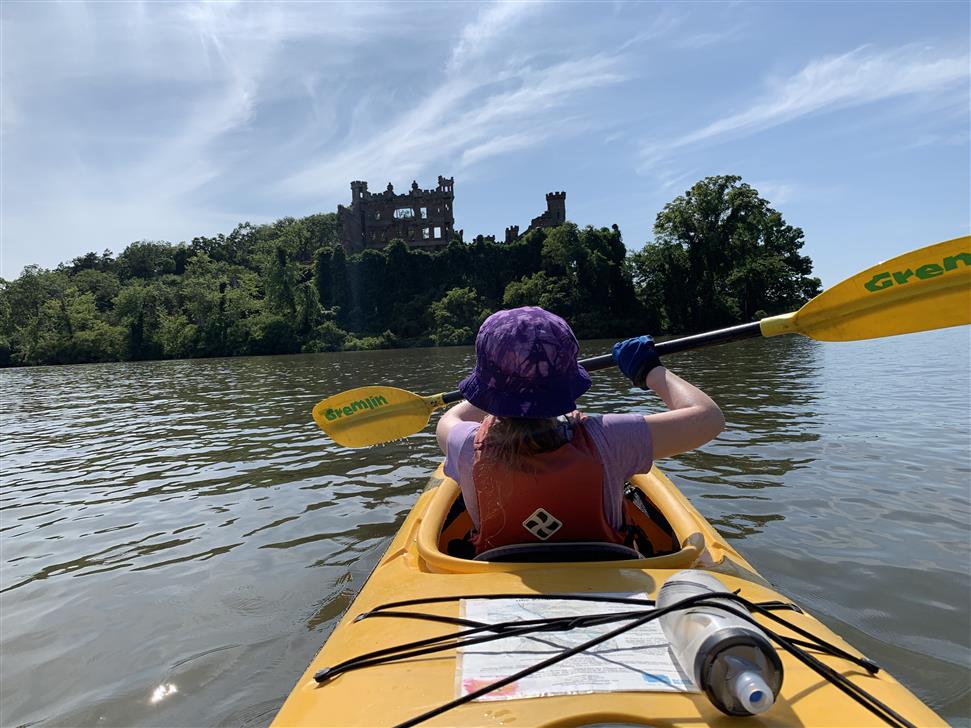 In the short article which follows, I describe what led me to seek sleep-away music camps for students age 13 and under. Following that, I have listed and linked five recommended summer camps. This list was developed from my own research and from personal recommendations. This article is not ad-supported and there is no sponsored content.
In the short article which follows, I describe what led me to seek sleep-away music camps for students age 13 and under. Following that, I have listed and linked five recommended summer camps. This list was developed from my own research and from personal recommendations. This article is not ad-supported and there is no sponsored content.
Each year in January...
I have recommended sleep-away summer camps and festivals to some of our advancing teens. Only very rarely has anyone taken my advice and actually attended a program. It’s OK, I don’t take it personally! Plus, there are good reasons why students and parents haven’t often chosen to pursue this opportunity: the tuition expense; the need to travel away from home; schedule conflicts; competing interests. And I never push very hard—I mention and recommend the possibility, but I rarely follow up with persistence.
This led me to this thought: If our older and advancing students may have pre-formed ideas and competing interests and obligations which keep them from considering summer music programs, maybe there are some younger students out there who might be interested!?
I undertook a search for quality programs suitable to our many capable (but not necessarily elite) younger students (age 13 and under). I looked for camps that were non-competitive or minimally competitive in both entrance process and camp environment…but that were also real music camps—which to me means that the programs offer individual music lessons from qualified adult teachers and supervised practice on quality instruments. After a pretty thorough search, I was surprised to find only a handful of such programs that are open to younger piano students. (I only looked for camps in the eastern U.S.)
These sleep-away camps aren’t just for future professional musicians and they’re not just for advancing students. They are suitable for any kid who loves music and is interested in an immersive experience. They also offer all of the traditional summer camp essentials like outdoor recreation and evening programs.
Recommended music camps accessible to students age 13 and under
SONATA/SONATINA (sonatina.com) Bennington, Vermont.
Unusual piano-focused in-town program. Four one-week sessions which may be combined.
ENCORE/CODA (encore-coda.com) Sweden, Maine
Traditional summer music camp in a lake-side setting. Most instruments and voice including musical theater. Two three-week sessions which may be combined plus a shorter two-week option for ages 8 to 10.
NEW ENGLAND MUSIC CAMP (snowpond.org/nemc) Sidney, Maine
Traditional summer music camp in a lake-side setting. Most instruments and voice. One four-week session. Also offers an "intensive" two-week session for high-school aged students.
INTERLOCHEN CENTER FOR THE ARTS (interlochen.org) Interlochen, Michigan
Traditional summer music camp in a lake-side setting. Two-week sessions plus other programs for advanced/elite students and many other disciplines.
POINT COUNTERPOINT (pointcp.com) Leicester, Vermont
Chamber-music focused program for strings and piano. A more focused and slightly more intense program than the others on this list. Traditional music camp experience in a rural setting with lake access. One one-week session in August for ages 12 and under plus multiple sessions for advancing older students in June and July.
WALDEN SCHOOL (waldenschool.org) Dublin, New Hampshire
One five-week session plus a shorter three-week option for ages 13 and under. Creativity and composition-focused program.
To parents and camp directors
If you know of good programs in the United States, let me know about them! I’ll look into any recommended programs and consider adding them to the list.
For older students age 13+
This post focuses on programs that are suitable for younger students age 8 to 12. If you are age 13+, all of these programs are worthy of consideration, but you also have many more options! There are even camps for adult amateur pianists!
Day camps
The biggest competition the above programs have isn't from one another. It's from local day camps, and the many other activities that compete for our attention each summer. The experience you can get in a residential (sleep-away) setting is unmistakably different from what you can get in a day camp. But if you can't consider living away from home for one reason or another, you might consider a local music day camp instead.
Develop your identity as a musician
Independent music study is, in some ways, a countercultural endeavor! Practicing alone and attending individual music lessons can make it feel like you have no team, and that your accomplishments don't matter. A good music camp may offer you the opportunity not only to develop your skill at the piano, but to become part of a community of like-minded students
Summer in our little studio
We sometimes dream of running our own piano day camp at the Studio…but not this year! But we’ll be open and here for you all summer, every summer, with easy flexible scheduling and no minimum requirements or monthly tuition. We post general details to the Summer Programs page of our website each year in early spring with full details and all schedules posted by May 1.
For Best Results...Foundations for Successful Piano Students
Wednesday, May 5, 2021 | Practicing and General Education
WE TEACH ALL AGES AND ALL STAGES We want all our students to love music. And we know that most students won’t grow up to be concert artists. Just the same, our fundamental goal is that each student experiences growth—month over month, year over year. And that, over time, this leads to substantial and durable skill at the instrument. With many years of experience, we know that the following foundations are necessary for student success. For best results…
PRACTICE INSTRUMENT Invest in the best-quality practice instrument you can, as soon as you can. An acoustic piano is strongly recommended for all ages and levels. A digital keyboard with full-sized, fully-weighted keys is acceptable for beginners. Anything less than full-sized fully-weighted keys is a toy, for our purposes. A bridge to buy you a few weeks to find a more suitable instrument, perhaps. Nothing more. You can invest in lessons…but without a quality acoustic piano, you’ll always be working against an invisible headwind. You’ll never explore your potential.
PRACTICE CONSISTENCY People with healthy teeth brush their teeth every day, or at least most days! Successful younger students practice every day. Daily practice is useful for all ages and levels, but the younger the student, the more vital it is to the student’s progress.
PRACTICE QUANTITY It’s not uncommon for a dedicated youth gymnast to spend nine hours per week in the gym. Even a recreational youth soccer player spends about three hours per week in season. Effective practice takes time. You don’t want to be watching the seconds tick by as you practice, listlessly waiting for your timer to buzz: “practice is over!” That won’t work! But without a lot of repetitions and a lot of time, you won’t progress in your skill. Week by week, you’ll need at least three hours of at-home practice in addition to your lesson. Spread over the week, that’s about 30 minutes per day. Youngest beginners may work up to this over the course of a few months. Consistency counts more than time for the youngest. But for everyone else: with less time, you’ll make little, if any, progress. With more time, you’ll make more progress. 30 minutes is just a ballpark to help you identify the line between adequate and inadequate for elementary-level students. It’s not enough to reach more advanced skill levels. Advanced students commonly require six to nine hours per week of at-home practice to continue to progress in skill.
PARENT SUPPORT Young children learn music the way they learn language: in the home and in the world, alongside their parents and caregivers. When a young child (ages 4 to 8) enrolls in piano lessons, it’s a journey that the parent and child take together. Attending lessons together and practicing together each day with a spirit of joint exploration are essential. For slightly older students (ages 8 to 12) parent engagement, assistance, and supervision can greatly increase the efficacy of the student’s practice. Even for older students (ages 10 to 12 and older), parent engagement and attention can still be useful. While all students will someday need to practice and learn independently, the process of acquiring this independence takes many years of support.
RECITALS Some students are natural performers and others are reluctant. Either way, when you have an event to prepare for, you’re more likely to do better work. When you can celebrate the achievement of your successful performance, you build your confidence and you make it more likely that you will look forward to, and be motivated by, future performance opportunities. Without the first recital, there is no second recital!
WORKSHOP CLASSES Some of us are introverts and some of us are extroverts. But even introverts need a peer group! Could you imagine going to school all alone with only one tutor and no other students? Our workshop classes are the heart of our community. They are a place to gain exposure, experience, confidence in sharing your music with others and will help you feel comfortable playing in recitals and other higher-intensity events. Workshops also let you set small benchmarks and goals. They give you access to new teacher perspectives and personalities. They are a place to make friends and learn from your peers.
EVENTS Performance events include non-competitive festivals, competitive events, as well as performance exams. In our Studio, no particular event is required of our students. But gaining independent feedback from expert evaluators and sharing music in the wider community are both invaluable for progressing students. Those who participate in outside events are more likely to stick with lessons and more likely to experience growth in their skill.
VARIETY Students enjoy lessons more and gain more durable skill when they study and enjoy different types of music. This means variety in all forms: style, genre, time period, technical exercise, and difficulty.
SUMMER PROGRAMS Few parents would encourage their child to go the whole summer without reading! Likewise with music. Learning is a year-round activity! That doesn’t always mean taking piano lessons every week. But keeping active with music-making, practice, and music-listening are essential to your long-term success. We offer a flexible Summer Session which allows our students to attend lessons when it is possible and convenient with no minimum commitments or fixed tuition.
THE CHICKEN OR THE EGG How do I know that my child will stick with lessons? Simply: no one knows for sure. Your child might stick with lessons, or she might not. Personality, lifestyle, aptitude, student interest, the student-teacher relationship…each plays a role. All are beyond the scope of this article. But the foundations on this list are vital. Which comes first? The talented student who plays with beautiful expression, or the student with a quality practice instrument? The happy and dedicated student, or the student with a consistent practice routine? We’ve seen many students with high aptitude or apparently strong potential who quickly loose interest and quit. We’ve seen students of moderate aptitude achieve tremendous skill at the piano.
FEELING OVERWHELMED? In this short article, we’ve described the foundations that are necessary for a specific type of success—which we define as month to month, year to year growth which one day results in substantial and durable skill at the piano. And we have started with a big assumption: that the student already has an interest in learning to play and that they show this interest through their demeanor at lessons and their attention to at-home practice. If you’re feeling overwhelmed: start by thinking about your goals are for your lessons and what is practical for your family. Do not allow the perfect to be the enemy of the good. Each day of your practice is like one step on a thousand-mile journey. You want that journey to lead somewhere, but you also want to enjoy the trip! Good luck and best musical wishes!
Basic Piano Buying Guide for Piano Students and Piano Parents
Wednesday, March 17, 2021 | Practicing and General Education
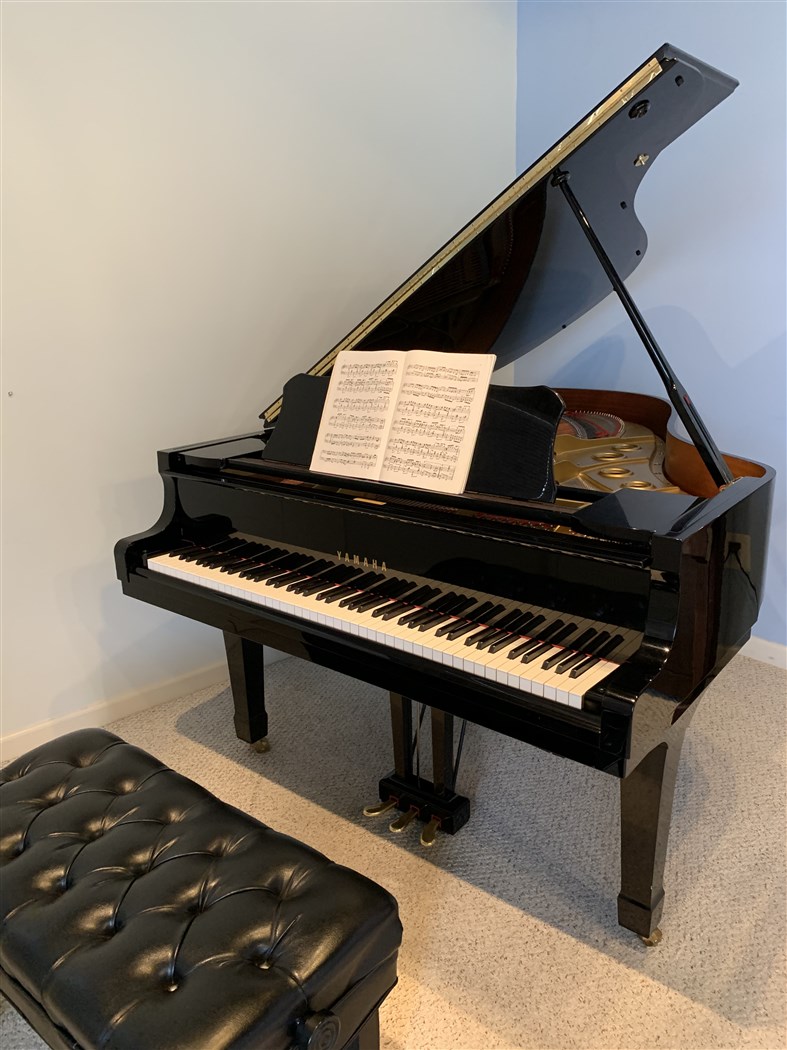 IN A NUTSHELL To maximize the chance of long-term success, invest in the best quality acoustic piano you can, as soon as you can. If you have the space and the means, buy a grand piano (over 5’9”). If a grand piano isn’t in the cards for you, buy a full-sized (46” to 52”) upright piano. A digital piano (or an acoustic piano in poor condition) will be a drag on student skill and motivation from day one. Even short practice sessions can add up to hundreds of hours over the course a couple years. When this time is spent on a quality acoustic piano, you have a higher chance of realizing your potential. In this guide, we quickly walk through all the ground-floor basics that new and returning piano students and piano parents need to know to begin making good purchase decisions.
IN A NUTSHELL To maximize the chance of long-term success, invest in the best quality acoustic piano you can, as soon as you can. If you have the space and the means, buy a grand piano (over 5’9”). If a grand piano isn’t in the cards for you, buy a full-sized (46” to 52”) upright piano. A digital piano (or an acoustic piano in poor condition) will be a drag on student skill and motivation from day one. Even short practice sessions can add up to hundreds of hours over the course a couple years. When this time is spent on a quality acoustic piano, you have a higher chance of realizing your potential. In this guide, we quickly walk through all the ground-floor basics that new and returning piano students and piano parents need to know to begin making good purchase decisions.
IF AN ACOUSTIC INSTRUMENT ISN’T POSSIBLE A digital keyboard with 88 weighted keys, stand, and pedal is acceptable for beginners and for students who are looking to learn basic keyboard skills but don’t imagine progressing to advanced levels. The most important feature to look for in a digital keyboard is “weighted keys,” which are essential to the development of finger-working muscles and a technique of controlled attack that will work on all instruments. Weighted keys are, in fact, not weighted, but spring-loaded so that they feel “heavy” as on a real piano. "Graded hammer action" is a marketing and technical term meaning that lower keys are slightly heavier than higher keys. This is a desirable feature and in the past a feature that separated higher quality instruments from budget models. "Semi weighted" means unweighted, at least for our purposes.
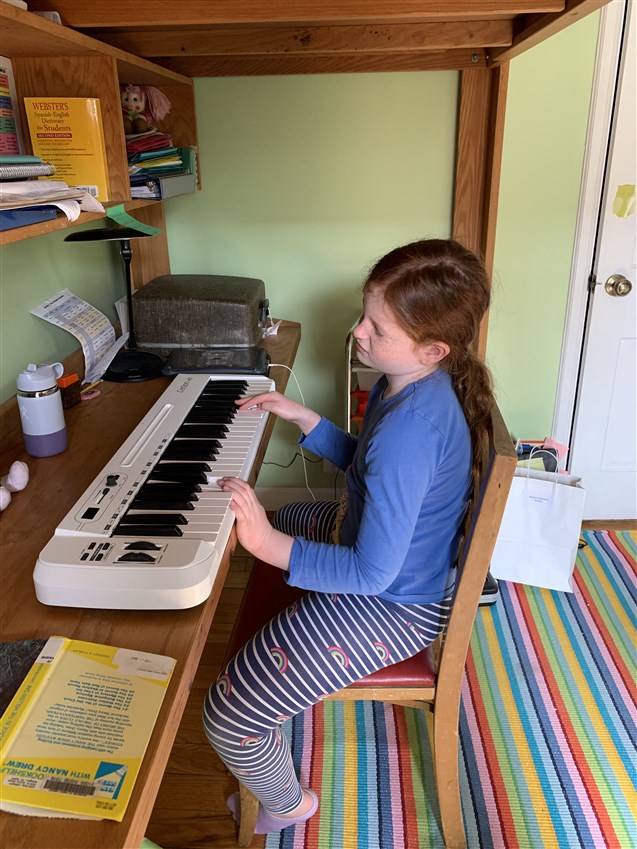 A FULL-SIZE KEYBOARD IS 88 KEYS You’ll rarely if ever find good-quality weighted keys on a less-than-full-sized keyboard. Do not be concerned about the space difference: an 88-key instrument will be no more than 14 inches wider than a 61-key instrument. All 88-key instruments (including all vertical acoustic pianos) are essentially the same width and take up the same amount of floor space.
A FULL-SIZE KEYBOARD IS 88 KEYS You’ll rarely if ever find good-quality weighted keys on a less-than-full-sized keyboard. Do not be concerned about the space difference: an 88-key instrument will be no more than 14 inches wider than a 61-key instrument. All 88-key instruments (including all vertical acoustic pianos) are essentially the same width and take up the same amount of floor space.
OTHER DIGITAL KEYBOARD FEATURES Many common electronic keyboard features can increase student engagement, especially in the short term. While these bells-and-whistles can be fun, they are unnecessary for basic musical and technical development. Recording capability, a built-in metronome with digital display, and a dual-headphone jack are useful—but not essential—features for student use.
DIGITAL VS ACOUSTIC An acoustic piano is an instrument which has strings and produces sound mechanically, without electricity. If you have to plug in your piano, it's digital (or electronic) instrument. An electronic keyboard is, at best, a poor substitute for a real piano. When a student learns to play on an acoustic instrument, they have the potential to learn how to manipulate a complex machine that can produce infinite gradations of tone and expression; when a student learns to play on a digital piano, they are pressing a button which prompts a computer chip to play a recording of a real piano. Let’s be honest: if you are trying to learn classical music or any sort of advancing piano technique on a digital keyboard, your instrument is limiting your progress…tremendously. Both practice time and your technical/physical skill accumulate from your first lessons. You can't wait until you are at an advanced level...because without adequate practice time on an acoustic piano, you are so much less likely to reach an advanced level! With the wide range of pianos and price ranges, a decent used acoustic piano can be found at a price you can afford. Even your grandparent’s old and worn upright—if in good condition—is preferable to a new digital keyboard. Again, don’t worry about the size of the instrument: a vertical piano takes up exactly the same amount of floor space as a digital keyboard.
HYBRID PIANOS A small but growing market segment seeks to bridge the divide between acoustic and digital instruments. Manufactures call these instruments “hybrid” digital pianos. Most hybrid pianos currently in use in the U.S. were made by Yamaha, but other manufactures (Kawai, Roland, Casio) also offer similar products. These instruments replicate the entire action of an acoustic piano and replace the usual touch-sensors with more sophisticated optical sensors. Hybrid digitals come remarkably close to the feel of an acoustic instrument, so much so that they can’t really be compared to traditional digital keyboards. But they also cost nearly as much as comparable acoustic instruments! Consider a hybrid piano if money is not a major limiting factor but lifestyle considerations are. (Frequent and unpredictable moves? High-rise apartment with neighbors on all sides?) In other cases, buy an acoustic piano. Be careful when shopping: at first glance, some high-end expensive digital pianos may be mistaken for hybrids.
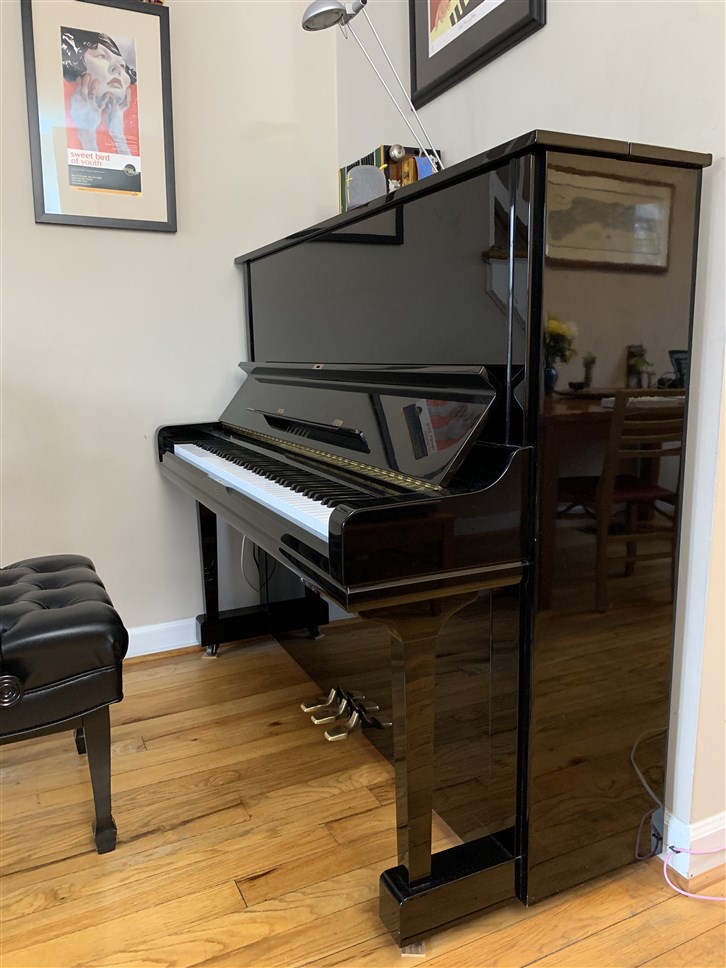 ACOUSTIC PIANOS Vertical (or upright) pianos are usually described by the following size categories: Spinets (36”); Consoles (41”); Studios (45”); and Uprights/Professional/full-sized (50”). Measurements are approximate and refer to the height of the piano from floor to top. Spinets and consoles were for many decades very popular entry-level home pianos; few have been made since 1990 as the low-cost segment of the market has shifted to digital keyboards, for good reason. If you can get an old spinet or console for free, or close, it could make a good starter piano, but in other cases, these should be avoided. As for the difference between studios and uprights: all things being equal, taller is better. Buy a full-sized instrument if you can. But any of these types, new or used, are suitable for beginner and intermediate students if the instrument is in good condition.
ACOUSTIC PIANOS Vertical (or upright) pianos are usually described by the following size categories: Spinets (36”); Consoles (41”); Studios (45”); and Uprights/Professional/full-sized (50”). Measurements are approximate and refer to the height of the piano from floor to top. Spinets and consoles were for many decades very popular entry-level home pianos; few have been made since 1990 as the low-cost segment of the market has shifted to digital keyboards, for good reason. If you can get an old spinet or console for free, or close, it could make a good starter piano, but in other cases, these should be avoided. As for the difference between studios and uprights: all things being equal, taller is better. Buy a full-sized instrument if you can. But any of these types, new or used, are suitable for beginner and intermediate students if the instrument is in good condition.
GRAND PIANOS A good grand piano over 5’9” is a major improvement over an upright. The cost of a decent grand is more than that of a comparable upright, but it’s perhaps not much as some people imagine. If you have the space and the means for a grand piano, rest assured that a good piano may outlive your children, will not lose value to the same extent that ordinary consumer products do, and will be superior in touch, reliability, and tone quality to most uprights. Avoid grands under 5’3”; instead consider a full-size upright. The term “baby grand” is not a reliable indicator of a piano’s size; find out a piano’s true size by measuring the length from end to end.
EDUCATE YOURSELF! If you’re purchasing a good acoustic piano, you’ll be making a substantial investment. It’s not unlike buying a car…but most people are more comfortable comparing cars than pianos! Among many different web resources, consider: rickjonespianos.com, pianopricepoint.com, pianobuyer.com, and of course your local dealers. In the D.C. area, consider: Jordan Kitts (Yamaha); Steinway Gallery (Steinway, Boston, Essex); The Piano Company (Kawai); Piano Craft; Rick Jones (good source for previously owned); Orpheus Music (good source for previously owned plus new Mason & Hamlin and Schimmel) If you have another good local dealer to recommend, let us know! Invest a little bit of time learning about the different choices within your market segment; you’ll be more able to evaluate information you get from dealers and more confident as you begin to narrow your options and make choices.
DEALER TIPS AND TRICKS Go to a dedicated music dealer. Skip the big box stores. If you can’t consider an acoustic piano, you may also check out a pro-audio dealer such as Sweetwater Sound. They may offer comparable digital pianos at lower prices than a piano dealer, especially at the lower end of the digital piano market. With certain brands, manufacturers distribute their instruments exclusively through a single retailer in a given geographic area. This means that your options for shopping around are restricted—at least for new instruments. Each local dealer can only sell the stock they have and the brands they represent. Be skeptical when a dealer gives you negative brand information about a product they don't sell. Most dealers list prices that are a little high, with the expectation that they will be bargained down somewhat. The potential for negotiation varies not only from dealer to dealer, but from brand to brand. If the dealer won’t negotiate and/or their prices are not close to what you’re expecting, find another dealer, or consider a different brand.
BRANDING TODAY With a few exceptions (most notably Steinway), “American” brands don’t mean much anymore. Some Japanese and Korean manufactures at one time made pianos in U.S. factories; most “American” brand names now come from Korea or China (and sometimes Japan). Some European-sounding names actually come from Europe, most come from Asia. Some new Yamaha piano models these days come from Japan but others are made in Indonesia. Both are acceptable for student use, but they are not directly comparable instruments—something you could guess by the large price difference between them. This brings up a sometimes-overlooked factor you may wish to consider when evaluating a piano: where and when was it was made. For example: a piano made in China in 1995 is almost certainly to be avoided, but a new piano made in China today under a respected brand name may be a suitable and reasonably-priced option.
UNIVERSITY SALES The pressure to buy is higher than at a regular retail store, but in most cases, these sales are run by the same local dealers you could visit at any time of the year. You can often get a lower price than at the dealer’s showroom, but not always. Go and look, but don’t be pressured to buy if you’re not ready!
TRADE UP CREDITS If you are buying a quality acoustic piano, it is unlikely that you will ever attempt to use trade-up credits. If you do use them, they may save you a little money, but they won’t save you a lot. A good-quality piano will retain much of its value, and dealers looking to make a sale are apt to be generous with the trade-in allowance, regardless of where you purchased the instrument.
GET A WARRANTY If you’re buying from a dealer or technician, your piano should come with a one-year warranty, regardless of whether it is new or used. Decline any deals that do not include this minimum level of protection. Reputable dealers may (and really should!) offer a longer warranty.
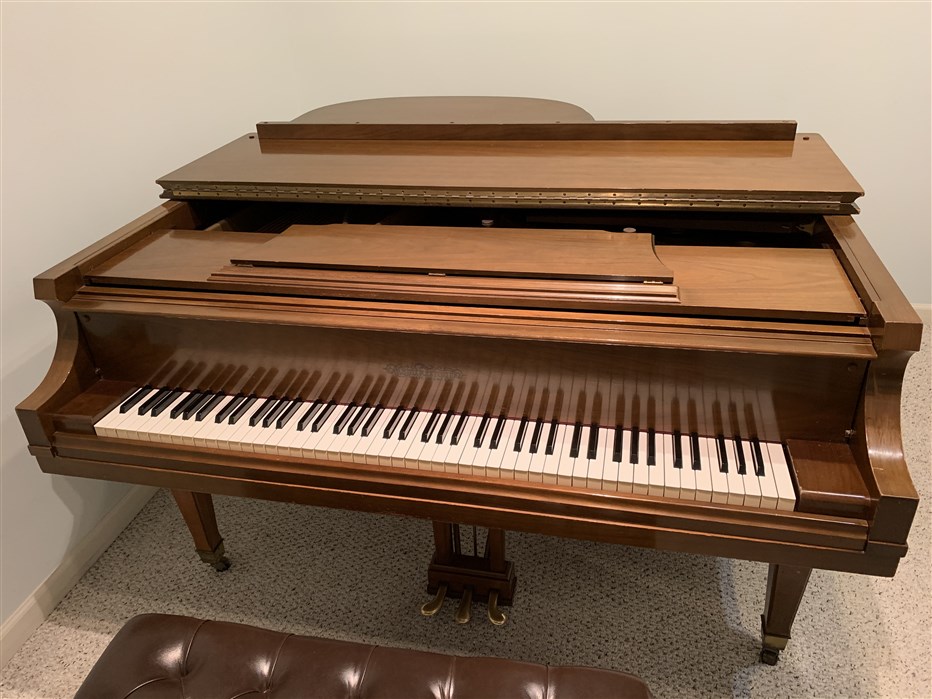 This piano is over 50 years old...and it sounds great!
This piano is over 50 years old...and it sounds great!
BUY USED When it comes to used pianos, it’s a buyer’s market! While you are recovering from new-piano sticker shock, consider whether a used piano might be suitable for you needs. You can usually get a much better deal buying a piano from a private individual than you can from a dealer; such transactions are also very risky for the buyer. It is unwise to buy from a private individual without having a trusted friend with some keyboard skills test out the piano first—and really, it’s best to hire an experienced technician to examine the instrument before you commit. Expect to pay $125-$250 for this service; it’s money well spent. If you're looking at the bottom end of the private market ($0 to $1500) you may get lucky and find a hidden gem! They’re out there! But you also need to be ok with the possibility that you'll be junking the instrument and upgrading at some unknown point down the road…and it might be sooner, rather than later.
YOU CAN DO IT! Unlike most consumer products, a piano is an investment for a lifetime—take your time, and good luck!
ADDENDUM: SO...HOW MUCH IS THIS GOING TO COST?
All prices are based on our personal experience with the Washington, DC-area market, over the course of many years. The price ranges on the market are truly staggering and range from free to nearly $200,000! The information below is only intended to get you a "ballpark" idea of what different types of instruments may cost.
ACOUSTIC INSTRUMENTS FROM DEALERS Used upright pianos of any quality go for $3000 and up. Used grand pianos start at around $8000. New pianos of any quality start at around $5000 for uprights and $11,000 for grands. Be skeptical of lower prices. Instead, consider used pianos. Remember these are ballpark starting prices for legitimate instruments—quality increases with higher prices at reputable dealers and the point of diminishing returns doesn’t start to be a factor until you reach at least triple the prices listed above: the Japan-made Yamaha U3 is among the best-quality upright pianos on the market today and its MSRP is around $15,000.
ACOUSTIC INSTRUMENTS FROM PRIVATE SELLERS You can usually get a used acoustic piano from a private seller for about ½ the dealer prices listed above—or less. Sometimes, much less. Usually, you’ll have to pay for moving and tuning—and most importantly, undertake the risk inherent in a private sale with no warranty.
DIGITAL KEYBOARDS The cheapest full-size digital keyboards start around $600; quality increases significantly as you pass the $1000 mark. The law of diminishing returns kicks in a bit over $2000, with the exception of a “hybrid” digital. The hybrid segment of the digital market starts at around $4000. Many models have a list price over $10,000. Buying a digital keyboard from a private seller is less risky than buying an acoustic instrument from an individual because it’s easier for you to test it out. If all keys work and seem to be of even weight (that is, you don’t find any heavy or sticky keys) and the speakers produce a good sound without distortion or static, you’re probably ok. You can usually expect to pay between 1/3 and 2/3 of the cost of a comparable new keyboard depending on the age of the instrument. Because prices have come down so low in recent years, you may find that 1/2 the price the original owner paid 10 years ago is pretty close to the current selling price for a comparable new instrument! It's a buyer's market. You can get a new entry-level digital piano for well under $1000, including stand, bench, and shipping. Keep this in mind when you're shopping for used. Most piano dealers won’t sell used keyboards; you may have to look at “pro audio” dealers to find used digitals in a store. It's fine if you can get one for free, but don't pay money for a used digital instrument over 15 years old. If something breaks, you probably will have a hard time finding parts to fix it. You should also exercise caution when considering a used hybrid digital piano, for the same reason.
REMOTE LESSONS: Tech Tips / Improving Sound Quality
Wednesday, April 15, 2020 | Practicing and General Education
About this post: With some months of experience, we’ve gone through some tech troubleshooting and we’ve written this Tech Tips Checklist (below) to help you get more out of your LIVE VIRTUAL LESSONS.
FIRST THINGS FIRST Start by using whatever you have. Don’t be discouraged by technical challenges. Any device that works will be OK for a few lesson and for most beginner and early-elementary students.
IMPROVING SOUND QUALITY There are two issues to consider: delivering better-quality audio to your teacher; and receiving better-quality audio from your teacher. Audio matters more than video for our purposes, and most of the steps below to improve audio will also improve video.
There are many factors at play when it comes to delivering and receiving better-quality audio. In the checklist below, we cover the steps most likely to deliver improvements in your audio, in the order that will make the most difference. How much effort you should invest in this task varies based on your circumstances. Better-quality audio matters little for an elementary-level student taking just one or two remote lessons. Better-quality audio is absolutely vital for advancing students taking remote lessons long-term.
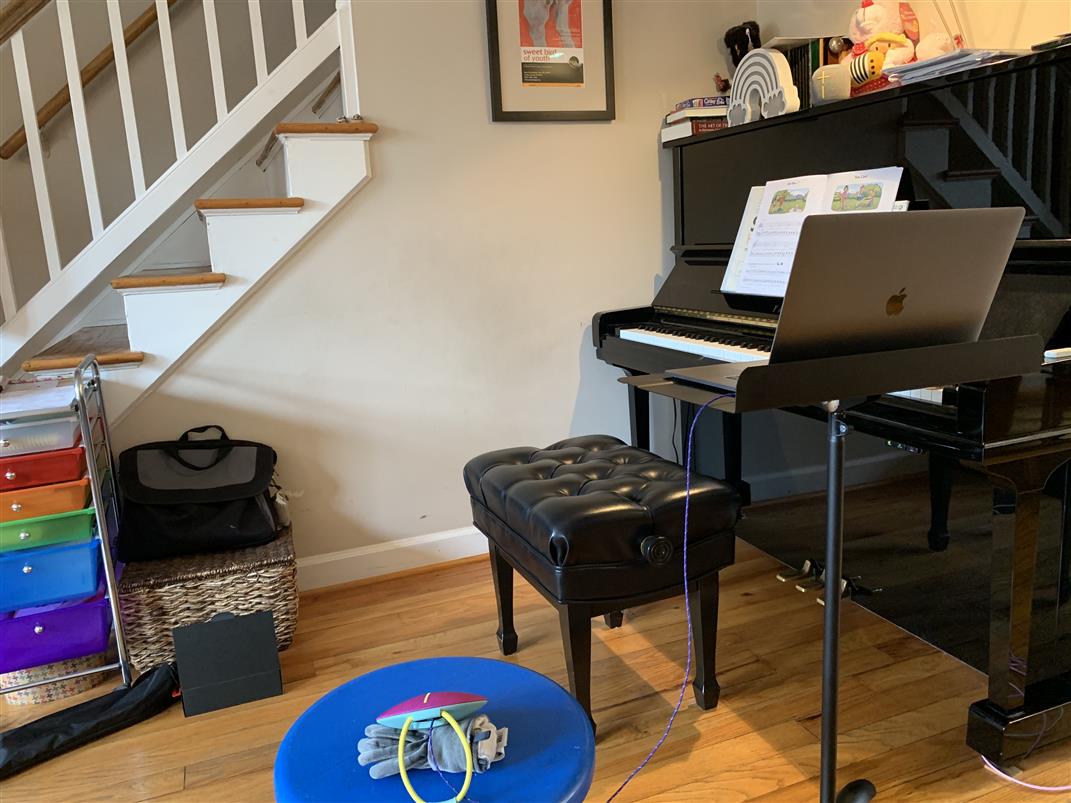 STEP ONE Ask your teacher how you sound! You don’t know how you sound to teacher! Your teacher may tell you that you sound great already. If that’s the case, and you are not an advanced student, skip the rest of this post! The inverse is also true: if your teacher sounds terrible to you, they won’t know if you don’t tell them.
STEP ONE Ask your teacher how you sound! You don’t know how you sound to teacher! Your teacher may tell you that you sound great already. If that’s the case, and you are not an advanced student, skip the rest of this post! The inverse is also true: if your teacher sounds terrible to you, they won’t know if you don’t tell them.
STEP TWO Use a high-quality laptop if you are lucky enough to have one. Turn off any microphone signal processing features that your operating system may be running. Detailed directions are beyond the scope of this post. This YouTube tutorial will show you how (use the chapter markers).
STEP THREE Test your connection speed. If you are relying on wireless, take your device and sit down next to your piano. Use a wired connection (ethernet) if you can. Go to speedtest.net and run a speed test. To receive good-quality audio from your teacher, you need a minimum of 10mbps/sec download. You probably have that already. To deliver good-quality audio to your teacher, you need a minimum of 10mbps/sec upload. If you are not able to test at or above 10mbps at your piano, troubleshoot your internet connection. If you are relying on a wireless connection, keep in mind that in some cases, you can test at very high speeds but you may still experience inconsistencies and momentary drop-outs in your Wi-Fi signal which may significantly degrade your sound. Using a wired internet connection (ethernet cable) may in some cases deliver a huge improvement in your sound. You can find 50-foot ethernet cables at Amazon for as little as $15.
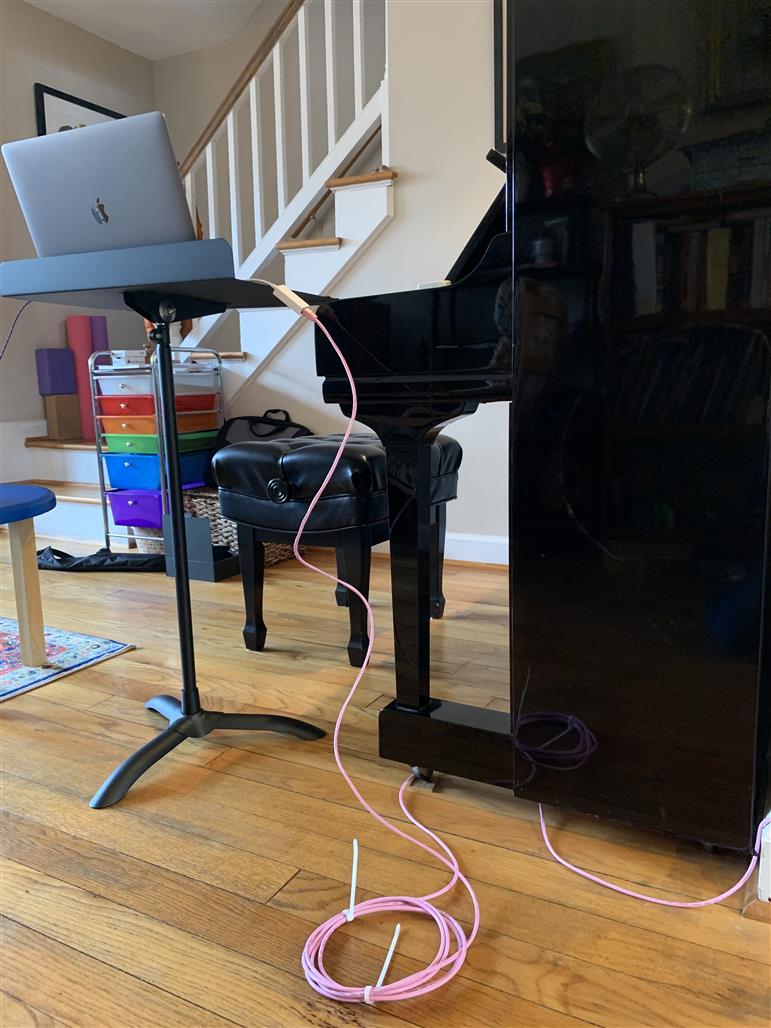 STEP FOUR Learn how to enable original sound in Zoom. Detailed directions are beyond the scope of this post. This YouTube tutorial will show you how (use the chapter markers). You may also consider the information on the Zoom support website. If you get distortion or static when playing or speaking loudly, adjust your mic input volume in audio settings within the Zoom app.
STEP FOUR Learn how to enable original sound in Zoom. Detailed directions are beyond the scope of this post. This YouTube tutorial will show you how (use the chapter markers). You may also consider the information on the Zoom support website. If you get distortion or static when playing or speaking loudly, adjust your mic input volume in audio settings within the Zoom app.
STEP FIVE Buy an external USB condenser microphone. A better microphone won’t make much difference if you haven’t taken care of all of the above steps first. But once you’ve taken care of those steps, a mic can really improve the sound you deliver to your teacher. The most popular are made by Blue, but there are many brands from which to choose. A pro-audio dealer such as Sweetwater Sound can provide high-quality devices and personal recommendations, at higher prices ($80-$200). But probably any USB condenser microphone selling for around $30 or more will be a huge improvement over your computer’s internal microphone. For ease of use, choose a USB microphone. Unless you already have a computer audio interface, avoid microphones with analogue connections (sometimes called TRRS or XLR).
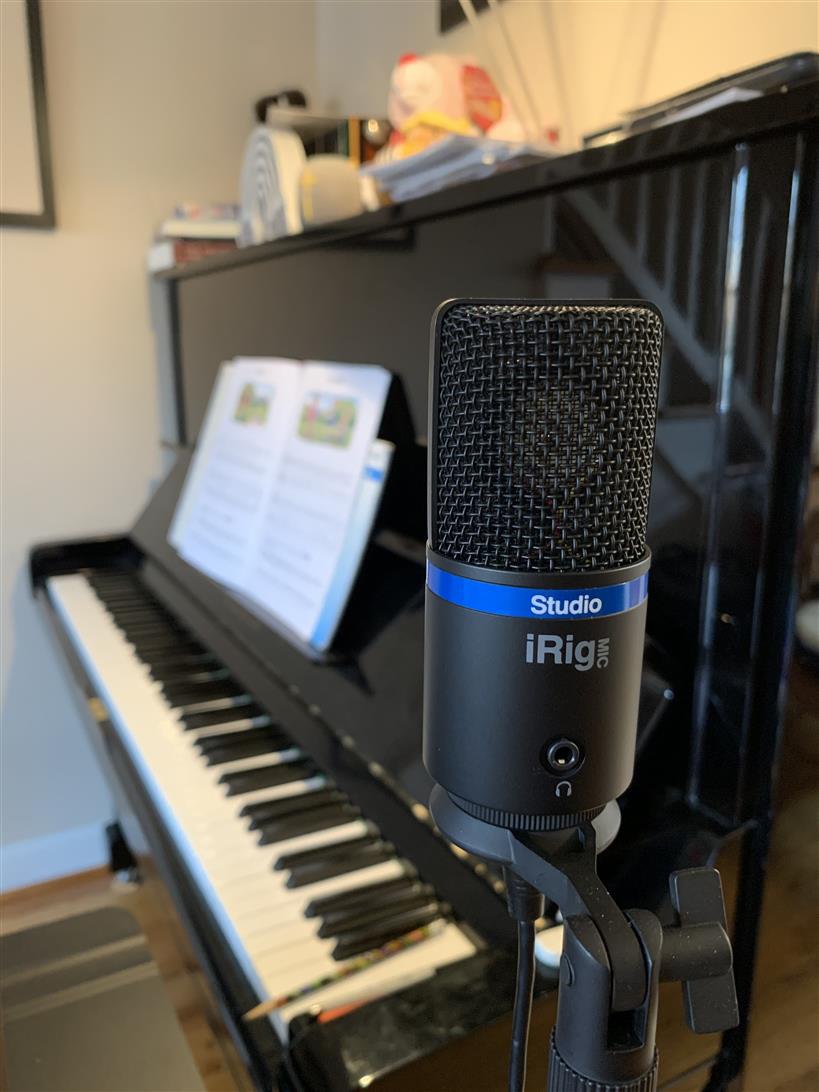 STEP SIX External speaker(s). Even on expensive laptops, the internal speakers on your device can’t give you great sound quality. And because they can’t be moved, your internal speakers may interfere with the sound you’re capturing. The microphone will pick up the sound coming from your speakers, which can create echo effects, fuzz, and otherwise degrade the audio you are hearing and/or sending. Any decent Bluetooth speaker will give you a big upgrade. Separating the speaker from the microphone (one device points one way, one points the other way), will further improve the sound you are hearing and/or sending. Use a wired connection to your speaker if you can, but if you can’t, the Bluetooth connection will probably work just fine.
STEP SIX External speaker(s). Even on expensive laptops, the internal speakers on your device can’t give you great sound quality. And because they can’t be moved, your internal speakers may interfere with the sound you’re capturing. The microphone will pick up the sound coming from your speakers, which can create echo effects, fuzz, and otherwise degrade the audio you are hearing and/or sending. Any decent Bluetooth speaker will give you a big upgrade. Separating the speaker from the microphone (one device points one way, one points the other way), will further improve the sound you are hearing and/or sending. Use a wired connection to your speaker if you can, but if you can’t, the Bluetooth connection will probably work just fine.
STEP SEVEN Tips and tricks. Even after doing all of the above steps, you still might need to adjust settings as you go. Unlike the steps above, these tips are all situational. You won’t need to try everything!
• Try headphones. For better listening to your piano and for hearing safety, avoid wearing headphones throughout the entire lesson if possible.
• Turn off your original sound when you are not playing.
• Move closer to your microphone when speaking. The mic settings for playing the piano may not be optimal when speaking.
• Mute your speakers when you are playing extended passages
• Mute your mic when your teacher is playing extended passages
• Move your external speakers and microphone, experiment over time to find good placement.
• Make test recordings on your device to determine what settings sound best.
AND LAST... Don’t be discouraged. Start with whatever you have. Not everyone will need to go through every step.
REMOTE LESSONS: Getting Started Guide
Tuesday, March 31, 2020 | Practicing and General Education
In a REMOTE LESSON we will use a video conferencing app to conduct a lesson of similar length and content to the student’s usual lesson. After the lesson is over, the teacher will email an updated assignment sheet.
REMOTE LESSON: BASIC CHECKLIST
♪ For the first lessons, parent help may be required.
♪ Choose a quality laptop computer with a good camera.
♪ Set it up ahead of time, and make sure it works by taking a video recording.
♪ Listen to the recording to make sure the audio quality is acceptable. Troubleshoot ahead of time.
♪ Find a stable place to put it where the student can see the screen AND the teacher can see the student’s face, hands, and keyboard.
♪ If you have EVER used a metronome before, it will be helpful to have a separate device available. You can always buy an old-fashioned metronome on Amazon or locally at Foxes Music. (Pretty much any option in the $10 to $30 rage will work.)
♪ If you have long hair, pull it back so your teacher can see more of your face!
♪ Plan to be present and engaged throughout the entire lesson. Probably your child will maintain appropriate behavior but…it can’t hurt to supervise them the first time. After the first lessons, you’ll have an idea of how much support and assistance your child needs going forward.
♪ Don’t be discouraged. Start with whatever you have, however you are able.
REMOTE LESSON: ADDITIONAL TIPS & NOTES
♪ If you can’t use a laptop, a tablet or phone will work. Getting the set-up right, so that your teacher can see the student’s hands, face, and keyboard may be harder.
♪ Placing your device on a soft surface may in some cases improve the sound quality.
♪ A wired connection is better than a wireless connection. A wired connection isn’t practical in all circumstances but use one if you can. You can purchase very long ethernet cables for $10 to $30.
ADDITIONAL CONSIDERTIONS FOR ADVANCING STUDENTS
The built-in microphone and built-in speakers in your quality laptop or tablet are probably acceptable for elementary students. For advanced students, better sound quality may make a big difference in the usefulness of the remote lesson. We have a separate "tech tips" post on improving your sound quality.
Practice Habits of Successful Beginners
Thursday, March 21, 2019 | Practicing and General Education
Who Are We Talking About?
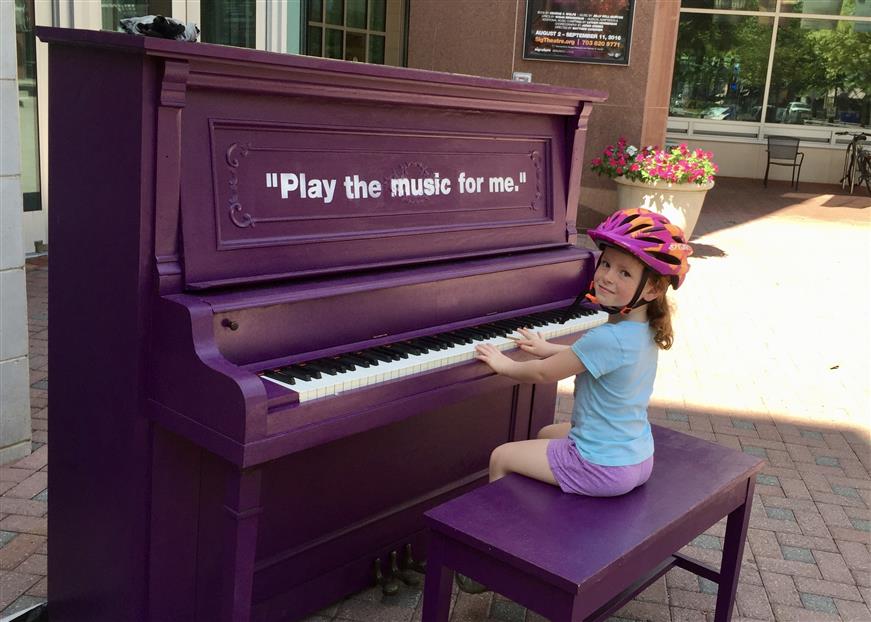 Ages 5 to 10 in method books labeled level 3 or below.
Ages 5 to 10 in method books labeled level 3 or below.
What Does Success Even Mean?
Students come to class/lesson happy and leave happy (usually). Students complete/finish one or more pieces most weeks. Students find the material accessible, and have no trouble playing pieces together with teacher accompaniments (or with other students) in class. As a result, students demonstrate substantial month-over-month growth in their skill and their understanding of musical concepts.
How Much Parent Support Is Required?
In short: it varies. Many younger students (ages 5, 6 and sometimes 7) will need 100% parent assistance totaling up to three hours per week, meaning they will be unable to implement any of these habits on their own, ever. This is normal for young beginners! On the other end of the spectrum, some slightly-older students (ages 8, 9, 10) might be able to demonstrate all these habits entirely on their own. Typically, even older students will still require parent assistance to maintain all habits consistently.
But How Much Time?
It varies so much by student that it may be better to think in terms of tasks, repetitions, songs played, and most importantly in achievements rather than in minutes. At the very beginning stages of our Bright Starts 1 class, students may get by on just 5-7 minutes per day. More typically, practice could take 30 minutes or even longer. It does not need to, and should not, take exactly the same amount of time every day.
1. Students Practice Daily
It is uncommon to miss more than one day per week, and rare to miss more than two. There are about 38 weeks in the school year*, and students practice at home five or more days per week in at least 34 of these weeks. Students continue a similar routine through many break weeks and at least half of the summer session. At-home practice is independent of lesson attendance: if a student misses a lesson, their practice routine is not affected. (*This is weeks of instruction, not counting weeks with holidays, such as Thanksgiving, Christmas, Spring Break.)
2. Students Complete First Steps Learning Accurately
At the earliest levels, this includes just three elements: notes (sing the note names), fingering/hand position (check the hand position, then sing the finger numbers) and rhythm (say the count). When you are looking at rhythm, both unit counting (half-note, half-note, ta, ta, ta, ta) and metric counting (1, 2, 3, 4, 1, 2, 3, 4) can be helpful. Unit counting is usually simpler for the youngest students to understand and remember.
3. Students Repeat Pieces Multiple Times
Students practice all the pieces on their assignment list each day. The number of repetitions varies from student to student, piece to piece, day to day, and section to section. Students complete multiple repetitions of most pieces or sections. Several times each week, one or more pieces or sections receives six+ consecutive repetitions.
4. Students Play With an External Beat
This can take many forms: playing the student part along with the student; playing the teacher accompaniment along with the student; singing along with the student (sing the words, or note names, or finger numbers, anything works); using the metronome; using the publisher’s recorded accompaniments; using the Piano Maestro or Piano Adventures apps. One or more of these forms happens at least three times each week on all pieces that could be completed in the next two lessons. If the starting tempo is slow compared to the suggested tempo, the student or parent increases it. This may be spread out over many days, especially for fast pieces. Of course, different parents have different skill and comfort levels with these tools. Not all parents will be comfortable with all tools.
5. Parents Assist By Making Limited Corrections...And By Asking and Answering Questions
Be cautious! Praise is way more important than criticism! But, sometimes, a student will practice with the palms of their hands resting on the strip of wood beneath the keys. Sometimes, a student will practice a piece faithfully but never notice the piece contains half notes! While problems such as these certainly can be corrected in lesson, it’s a habit of the most successful students that these and many similar basic issues are noticed at home. Likewise with questions: your child may have questions about how to practice a piece. You may or may not know the answers! But your availability to explore possible answers with students is a success habit.
Feeling Overwhelmed? Relax!
Use this list as a guide, not a straightjacket. Our Studio programs are built to be serious but accessible, and most students will experience progress and positive results even with imperfect habits. Seek to build in missing habits gradually, with a sense of exploration. This little list is intended to describe behaviors that highly-successful students have in common, and is not intended to describe the one and only path to success. Neither is it intended to describe larger issues of effective practice.
Addendum: Ideas for Additional Support
Consider Group Classes
Bright Starts group classes include a lot of time listening, singing, and playing together with others. If you are uncomfortable singing along with your child, or your child resists playing with accompaniments…these habits are built right into our classes.
Observe Lessons
We welcome and encourage observation of lessons. You may be more comfortable answering questions and making small corrections.
Learn Your Child's Music!
Most pieces from book 1 can be played by parents…with just a little bit of practice! Eventually, your child’s skill will probably exceed your own, but by attempting to play your child’s music, you can delay the moment when that happens, perhaps by a year or more!
Practice Partner
Sometimes, finding a practice partner in your neighborhood (an advancing student age 12 to 18) can help students practice at home and can take some of the pressure off parents.

